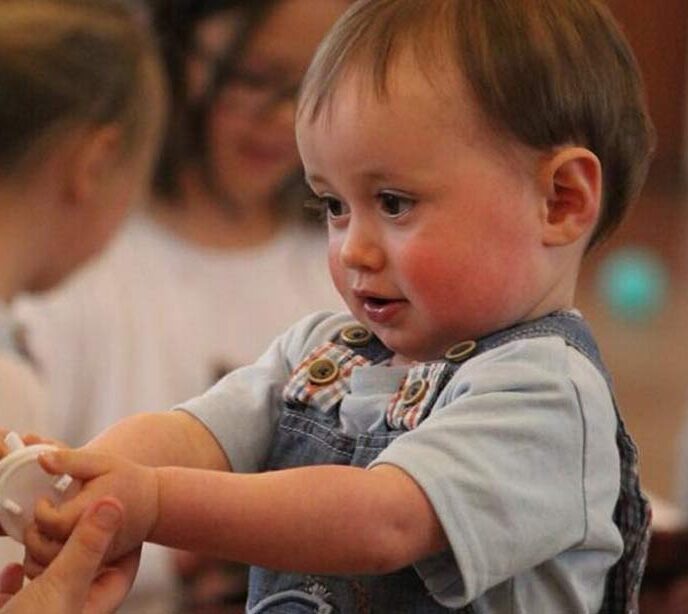What is Verbal Behavior Therapy?
Verbal Behavior Therapy is a vital tool for helping those with autism improve their communication skills. Learn more about this approach to teaching communication and the benefits it offers children with autism..
Understanding VBT and Its Impact
Communication is the foundation of human interaction, enabling us to connect, share ideas, resolve conflicts, and collaborate with others in our daily lives. However, communication can present distinct challenges for children with autism for a number of reasons, from neurological differences to sensory sensitivities and social factors.
Verbal Behavioral Therapy (VBT),sometimes called applied verbal behavior therapy, is an evidence-based approach rooted in the principles of Applied Behavior Analysis (ABA). The ABA verbal behavior approach sees verbal communication as a learned behavior and focuses specifically on teaching and improving a person’s verbal communication skills. It is a practice aimed at helping people who struggle in this area to develop their functional language and communication skills.
At Lighthouse Autism Center, we use the Verbal Behavioral (VB) branch of ABA to teach children with autism essential communication and language skills. We focus on why we use language, the purpose of words, and how children with autism can use their words to communicate their needs, wants, and ideas in a meaningful and effective way.
VBT is derived from the same philosophy of behaviorism that underpins ABA. It employs basic scientific methodologies to develop socially and educationally significant behaviors. VBT emphasizes the use of language within environmental contexts and verbal communities so that the learned communication skills are both functional and contextually relevant.

How Does Verbal Behavior Therapy Work?
VBT uses different types of verbal behavior (called verbal operants) that reflect how we naturally use language every day to support communication growth in children with autism. It breaks language into specific uses and focuses on how these can be applied in everyday routines, helping these children understand both the purpose and function of communication. Some of these operants include:
- Mand: When a person or child uses language to make a request. For example, if the child is thirsty, they will say “water” and receive a glass of water to drink.
- Tact: When a person or child labels something in the environment. For example, the child may see a glass filled with water and then say, “Water.”
- Intraverbal: When a person or child is able to respond to a question. For example, when a teacher asks, “Would you like a glass of water to drink?” and the child responds, “Yes.”
- Echoic: When a person or child repeats what another person said. For example, when a teacher says “water,” and the child repeats the word “water.”
Together, these different operants help create a strong foundation for expressive and receptive language. They demonstrate how VBT breaks down communication into functional units. So, when a child masters these different types of verbal behavior, they will be better able to understand and use language in meaningful ways. This structured approach often complements other therapies, such as speech therapy for autism, to strengthen expressive and receptive language.
The History of Verbal Behavior Therapy
The research and practices of VBT are based on the book “Verbal Behavior,” published in 1957 by the very influential behaviorist B.F. Skinner. Skinner is recognized for developing operant conditioning, the concept that behaviors are more likely to continue if they are rewarded and less likely to continue if they are discouraged or punished.
VBT builds on this idea but goes beyond simple behavior and response. It looks at how language is shaped not only by the environment but also by the people involved in the interaction. In VBT, both the speaker and the listener play important roles, along with the setting where communication happens.
This approach is different from language theories that focus on what happens inside the brain or body. Instead, VBT emphasizes how environmental factors influence why and how language is used.
Importantly, VBT doesn’t only apply to spoken words. It also includes nonverbal ways of communicating (like gestures, eye contact, or pointing) that make it a flexible approach that fits into many real-life situations. Rather than focusing on grammar or sentence structure, VBT emphasizes how language functions and fits into everyday interactions and is about helping children use language in meaningful, everyday ways.
This practical focus makes VBT especially useful in real-world settings, where communication often involves more than just words. It supports a wide range of expression, helping children with autism connect with others in ways that are meaningful and relevant to their daily lives.
To deliver this kind of targeted support, many behavior analysts, therapists, and educators choose to pursue verbal behavior therapy certification. While not always required for employment, depending on the position, certification can enhance a professional’s ability to apply VBT strategies effectively and ensure they’re using research-based methods tailored to each child’s needs.
The Pros of VBT
Many practitioners utilize ABA verbal behavior therapy as an approach to developing communication skills in children with autism. By breaking language into teachable units, VBT supports personalized instruction and often works in tandem with interventions that address social skills deficits in autistic children. There are a number of benefits to VBT as a part of the broader framework of ABA. Some of the main pros of VBT include:
- Enhances analysis of how we learn to speak in a natural environment. Language acquisition can be natural, but should not be confused with being innate.
- Allows language to be broken down into small sections for in-depth analysis.
- With the analysis, specific instructional sequences can be systematically developed for an individual with autism.
- When learning issues occur, the analysis allows us to pinpoint possible sources.
- Allows for individualized instructional strategies based on what the individual needs.
- Helps create intensive and systematic intervention plans for those who have difficulties with communication and/or intellectual disabilities.
- Intervention plans for individuals with difficulties with language and/or disabilities can be incorporated into natural and artificial settings.
- Encourages continued research by offering clearly defined methods, helping therapists better understand which communication strategies are most effective for each child.
Together, we can unlock your child’s potential
Related News

10/28/2025
Choosing Gifts for an Autistic Child
Choosing a gift for a loved one is rarely simple, and for parents of autistic children, this process can be even more challenging. Choosing gifts for autistic kids requires extra thought about not just the child’s interests, but also understanding their sensory needs and how they communicate what they may want. But, with a bit […]

10/28/2025
The Benefits of Early Intervention and Full-Time ABA Therapy
Early ABA intervention gives autistic children more time to build social, communication, and life skills. Starting therapy early can support long-term growth, confidence, and independence. The Benefits of Early Intervention and Full-Time ABA Therapy When it comes to ABA therapy and early intervention, almost any therapist you talk to will tell you that the earlier […]

10/28/2025
Transitioning From ABA to School
It’s difficult to know when, or even if, you should move your autistic child from ABA therapy to a mainstream school. We take a look at all the different elements you need to factor into your decision so that you can make the right choice for your child and family. Transitioning From ABA to School: […]


